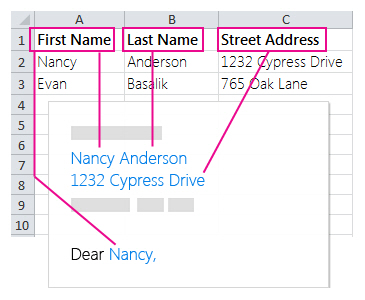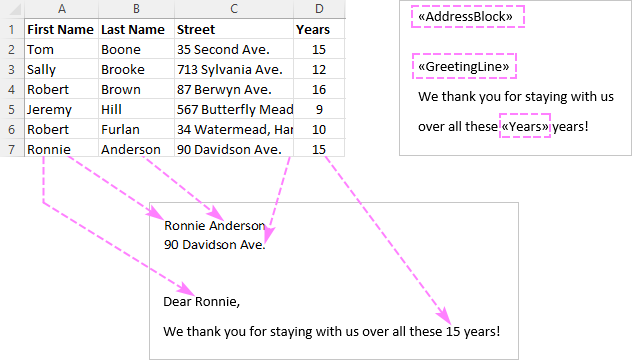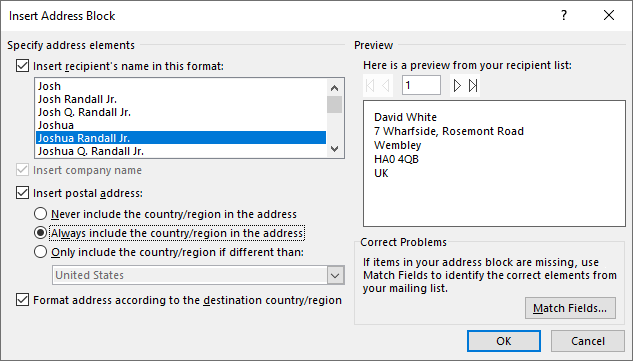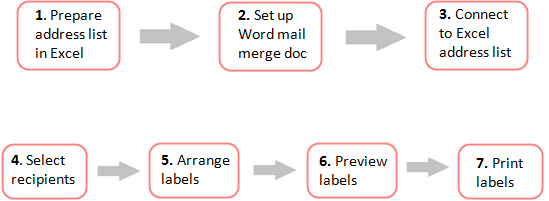Unlocking The Power Of Mail Merge: Three Data Sources To Transform Your Communications
Mail Merge From Excel To Microsoft Word
Keywords searched by users: What are three data sources you can use for a mail merge Confirm Data Source Mail Merge, Mail merge Excel to Excel, Insert Word field If mail merge, What is mail merge, Attach file mail merge, Mail merge date format dd/MM/yyyy, Mail merge not sending emails, Mail merge contacts outlook
What Type Of Data Sources Can Be Used In A Mail Merge?
In a mail merge, a Data Source is a crucial component that holds the information meant to be integrated with the Main Document, including details like names and addresses. A Data Source file can take various forms, offering flexibility in how you store your data. These formats include Word tables, Excel spreadsheets, Access tables, and text-delimited files. It’s important to note that before you can utilize a Data Source in a Mail Merge, you need to establish a connection to it, ensuring seamless data integration into your documents. This connection process is essential for the smooth execution of the Mail Merge operation.
What Is The Data Source Of Merge Fields?
The data source for merge fields is derived from the column headings within the dataset you are working with. To illustrate this concept, let’s consider how the Address Block and Greeting Line collections of merge fields can extract information from an Excel spreadsheet to populate a form letter. Essentially, these collections, consisting of various merge fields, tap into the specific columns of your dataset to gather relevant data for personalized letter generation.
Where Is The Data Source Created In Mail Merge?
In the context of mail merge, the data source is a crucial component, and it is important to understand where it is created. Microsoft Word simplifies the process by allowing you to automatically insert greeting text, titles, and names without manually adding these elements along with the necessary merge fields. The data source, in this case, is stored within a table. This table has a specific structure: its first row serves as the header row, and it contains the field names that correspond to the data source. This organized structure ensures that Word can seamlessly match the information from your data source to the appropriate placeholders in your document, streamlining the mail merge process.
Found 41 What are three data sources you can use for a mail merge







Categories: Top 16 What Are Three Data Sources You Can Use For A Mail Merge
See more here: tfvp.org

A Data Source is a file that contains the information to be merged with the Main Document, such as names and addresses. The Data Source file can be a Word table, an Excel spreadsheet, an Access table, or a text-delimited file. Important: You must connect to a Data Source before you can use it in a Mail Merge.The merge fields come from the column headings in the data source. Here’s an example of how the Address Block and Greeting Line collections of merge fields might pull data from an Excel spreadsheet into a form letter. The Address Block and Greeting Line fields are collections of merge fields.Word can automatically insert all the appropriate greeting text, title, and name fields at once, so you don’t have to insert the text and required merge fields yourself. Data source information is stored in a table. The first row of the table is the header row and contains the field names for the data source.
- Excel spreadsheet. An Excel spreadsheet works well as a data source for mail merge if all data is on one sheet and the data is formatted well, so that it can be read well with Word. …
- Outlook Contact List. …
- Apple Contacts List. …
- Text files.
Learn more about the topic What are three data sources you can use for a mail merge.
- Data sources you can use for a mail merge – Microsoft Support
- KB128: About Mail Merge for Form Letters and Mass Mailings
- Insert mail merge fields – Microsoft Support
- Mail Merge in Word – CustomGuide
- Prepare your Excel data source for a Word mail merge – Microsoft Support
- Merging with Two Data Sources – Word Tips
See more: blog https://tfvp.org/category/science